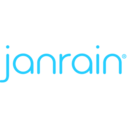Pubfood and the Rise of Header Bidding for Publishers

Automation is rapidly transforming digital advertising, reducing media-buying inefficiencies and improving audience targeting, allowing both publishers and brands to deliver more relevant messaging to consumers.
The issue online publishers often have with automated advertising (such as programmatic) is that it uses a waterfall or daisy-chain model for generating ad-inventory revenue. A daisy chain sends successive ad requests to multiple ad networks simultaneously, resulting in longer response times typically, high server load (and high server costs) and low scalability.
While the waterfall system is efficient when it comes to selling inventory, as impressions funnel downward, the value typically decreases. Since not every buyer is eligible to participate in every auction, competition for impressions drops (along with CPMs) and as a result publishers are seeking change. There's a better way, right? Yes, of course!
Enter header bidding, or "pre-bid technology," a system or approach designed to level the playing field between direct buys, ad networks and exchanges - and ultimately increase revenue yield for publishers. While it's been on the proverbial radar of sophisticated publishers for many years, header bidding is quickly becoming the go-to work-around for dealing with lost revenue.
Header bidding essentially gives publishers the advantage by streamlining auctions, allowing them to sell more of their inventory at a premium. Multiple platforms bid on an impression at once so its value is retained; and more competition and more potential buyers translate into more demand and higher bids.
Publishers that have not had enough inventory demand in the past can now harness their ad servers' capabilities to attract new buyers. In essence, they can create a private marketplace model where one didn't exist previously. If they hope to participate in this model, though, publishers need the technology to deploy it. Fortunately, they are beginning to emerge.
Yieldbot, for example, recently launched an open source header bidding framework dubbed Pubfood.js that aims to facilitate the integration of demand partners into publisher ad stacks and put an end to the daisy chain once and for all.
Pubfood.js enables publishers to measure, understand and manage multiple bid partners ahead of their ad server. The platform creates an OSS media side framework that will not only understand the demand of multiple partners, but also will alleviate issues around inventory, pricing, latency of requests and through continued development, viewability, and non-human traffic - all concerns publishers are facing now and will continue to face around the value of their media in the future.
"Yieldbot was among the first to develop header bidding technology in 2011, and since then, we have installed header integrations on more than 750 partners as a publisher-centric alternative for inventory monetization. Now with the rise in header framework popularity, I believe the time is right to give further control to publishers with direct access to source code and allow publishers to finally control their own destiny," said Jonathan Mendez, CEO of Yieldbot.
"Our deep experience with header technology has enabled us to develop an open framework for any publisher to increase their control, visibility and transparency over demand partners. We chose an open source framework to ensure continuous and rapid development of the platform and we believe it will become the industry standard for publisher inventory access, monetization and user experience for years to come."









